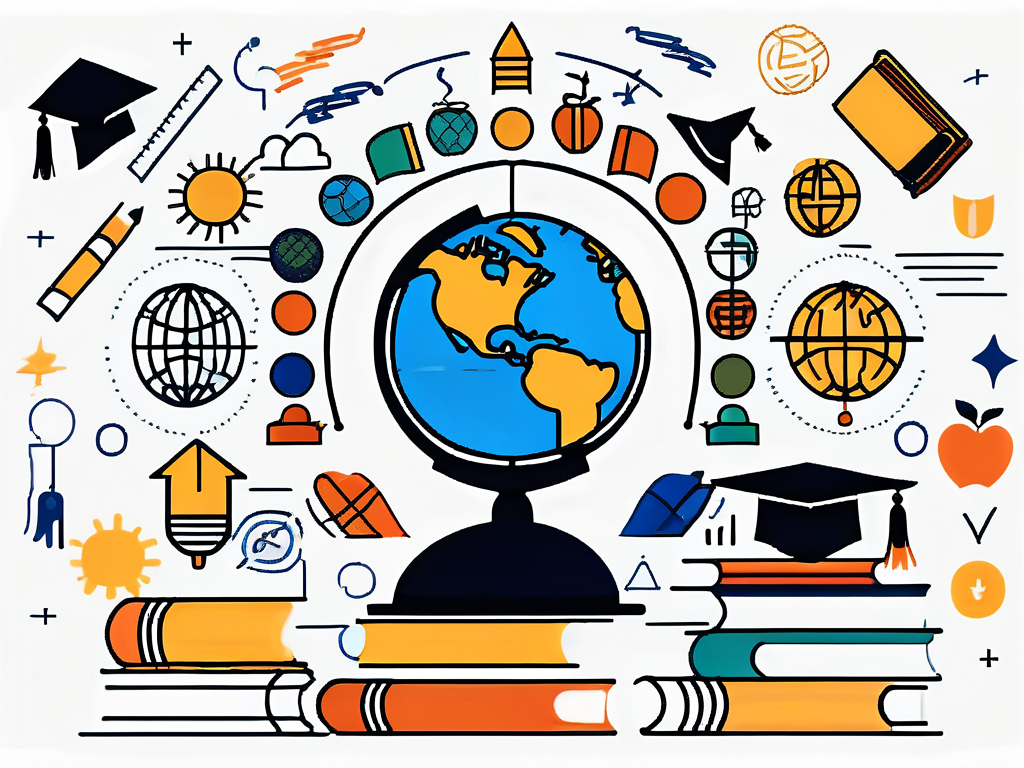Teaching is a noble profession that has the power to shape the minds of future generations. But have you ever considered taking your teaching skills to a whole new level by becoming an international teacher? International teaching offers a unique opportunity to broaden your horizons, immerse yourself in new cultures, and make a positive impact on students from around the world. In this article, we will explore the key elements that contribute to successful international teaching and provide you with invaluable advice to elevate your teaching game. Let’s delve into the world of international teaching and discover what sets it apart from traditional teaching.
Understanding the concept of international teaching
International teaching is more than just teaching in a different country; it involves embracing cultural diversity and adapting to unfamiliar educational systems. One of the fundamental aspects of international teaching is cultural sensitivity. As an international teacher, it is crucial to understand and respect the customs, traditions, and values of the host country and its students. By demonstrating cultural sensitivity, you create a harmonious and inclusive learning environment where students feel valued and heard.
Language proficiency is another essential factor in international teaching. While many international schools offer bilingual programs or English as a second language (ESL) support, having a solid grasp of the local language can immensely enhance your teaching effectiveness. Fluency in the local language enables you to connect more deeply with your students, understand their unique perspectives, and facilitate smoother communication.
Moreover, international teaching provides educators with the opportunity to broaden their horizons and gain a deeper understanding of global issues. Teaching in a different country exposes teachers to diverse teaching methodologies, curriculum structures, and classroom dynamics. This exposure not only enriches their professional skills but also fosters a sense of adaptability and open-mindedness.
Additionally, international teaching offers a platform for cross-cultural collaboration and exchange of ideas. Educators working in international schools often collaborate with colleagues from various backgrounds, bringing together a wealth of experiences and teaching approaches. This collaborative environment encourages innovation and creativity in teaching practices, ultimately benefiting both teachers and students alike.
The key skills for successful international teaching
Beyond cultural sensitivity and language proficiency, there are several other skills that are vital for successful international teaching. Effective communication strategies lie at the heart of international teaching. Clear and concise communication ensures that your expectations and instructions are understood by students from diverse backgrounds. By using visual aids, gestures, and active listening techniques, you can bridge the gap between languages and foster an inclusive classroom community.
Mastering classroom management in diverse environments is also crucial. As an international teacher, you will encounter students with different learning styles, disciplinary norms, and cultural expectations. It is essential to create a well-structured and engaging learning environment that caters to the needs of all students while fostering mutual respect and understanding.
Furthermore, adaptability is a key trait for successful international teaching. Flexibility in lesson planning and the ability to adjust teaching methods on the fly are essential when working with students from various cultural backgrounds. Being open to new ideas and approaches can enrich the educational experience for both you and your students, leading to a more dynamic and engaging classroom environment.
Another important skill for international teaching is empathy. Understanding the challenges and perspectives of students who may be far from home or adjusting to a new culture is crucial for creating a supportive and nurturing learning environment. By showing empathy towards your students, you can build trust and rapport, ultimately enhancing their educational journey.
The impact of technology on international teaching
In today’s digital age, technology plays a significant role in international teaching. Utilising digital tools can greatly enhance your teaching effectiveness and student engagement. Interactive whiteboards, online resources, and educational apps can augment traditional teaching methods and provide a more interactive and dynamic learning experience for students. Incorporating technology in your lessons helps bridge the digital divide and prepares students for the global workforce.
Furthermore, online learning has become increasingly prevalent in international education. Distance learning platforms and virtual classrooms enable students to access quality education regardless of their geographical location. As an international teacher, embracing online learning platforms can expand your reach and allow you to connect with students from around the world.
Moreover, the integration of technology in international teaching has revolutionised the way educators assess student progress. Online assessment tools and learning management systems provide teachers with real-time data on student performance, allowing for personalised feedback and targeted interventions. This data-driven approach not only enhances teaching efficiency but also enables teachers to tailor their instruction to meet the diverse learning needs of students from different cultural backgrounds.
Additionally, the use of technology in international teaching promotes collaboration and cultural exchange among students. Virtual communication tools and online collaborative platforms facilitate cross-cultural interactions, enabling students to engage with peers from diverse backgrounds and develop a global perspective. By fostering a sense of international community within the classroom, technology helps students cultivate essential skills for success in an interconnected world.
Overcoming challenges in international teaching
While international teaching offers numerous rewards, it also comes with its fair share of challenges. Dealing with cultural differences in the classroom can be complex, but it is essential to approach it with an open mind and a willingness to learn. Proactively seeking to understand different cultural perspectives and adapting your teaching methods accordingly can help build cultural bridges and foster mutual respect among students.


Language barriers can also pose challenges in international teaching. However, by using visual aids, gestures, and simplified language, you can effectively communicate with students who may have limited English proficiency. Additionally, partnering with local teachers or utilizing language support services can further facilitate communication and create an inclusive learning environment.
Another significant challenge in international teaching is the adjustment to different educational systems and teaching styles. Each country has its own unique approach to education, which can vary greatly from what you are accustomed to. It is crucial to familiarise yourself with the local curriculum, teaching methods, and assessment practices to ensure that you are effectively meeting the needs of your students.
Furthermore, navigating administrative processes and paperwork in a foreign country can be daunting. From obtaining work permits to understanding tax regulations, there are numerous bureaucratic hurdles to overcome. Seeking guidance from experienced colleagues or local authorities can help simplify these processes and ensure that you are compliant with all legal requirements.
Continuous professional development for international teachers
Professional development is essential for any teacher, and it is particularly vital for international teachers. Lifelong learning is a hallmark of successful international teaching. Staying updated with the latest educational trends, research, and best practices ensures that you provide the highest quality education to your students.
There are several strategies for staying updated in the field of international teaching. Attending conferences, workshops, and seminars specific to international education can provide valuable insights and networking opportunities. Engaging in online forums, joining professional associations, and collaborating with other international teachers are also excellent avenues for continuous learning and growth.
As an international teacher, you have the power to make a lasting impact on the lives of students from diverse backgrounds. By understanding the concept of international teaching, developing key skills, embracing technology, overcoming challenges, and pursuing continuous professional development, you can elevate your teaching game and unlock a world of opportunities. So, take the leap and embark on an exciting journey as an international teacher. Your students await!
Furthermore, international teaching offers a unique platform for cultural exchange and global understanding. By immersing yourself in different educational systems and teaching practices, you not only enhance your own skills but also contribute to the enrichment of educational diversity worldwide. The ability to adapt to various teaching methodologies and cater to the needs of a multicultural classroom is a valuable asset that sets international teachers apart.
Moreover, the challenges faced by international teachers, such as language barriers, cultural differences, and varying educational standards, provide opportunities for personal and professional growth. Overcoming these obstacles through continuous professional development not only improves your teaching effectiveness but also broadens your perspective and enriches your teaching experience.

